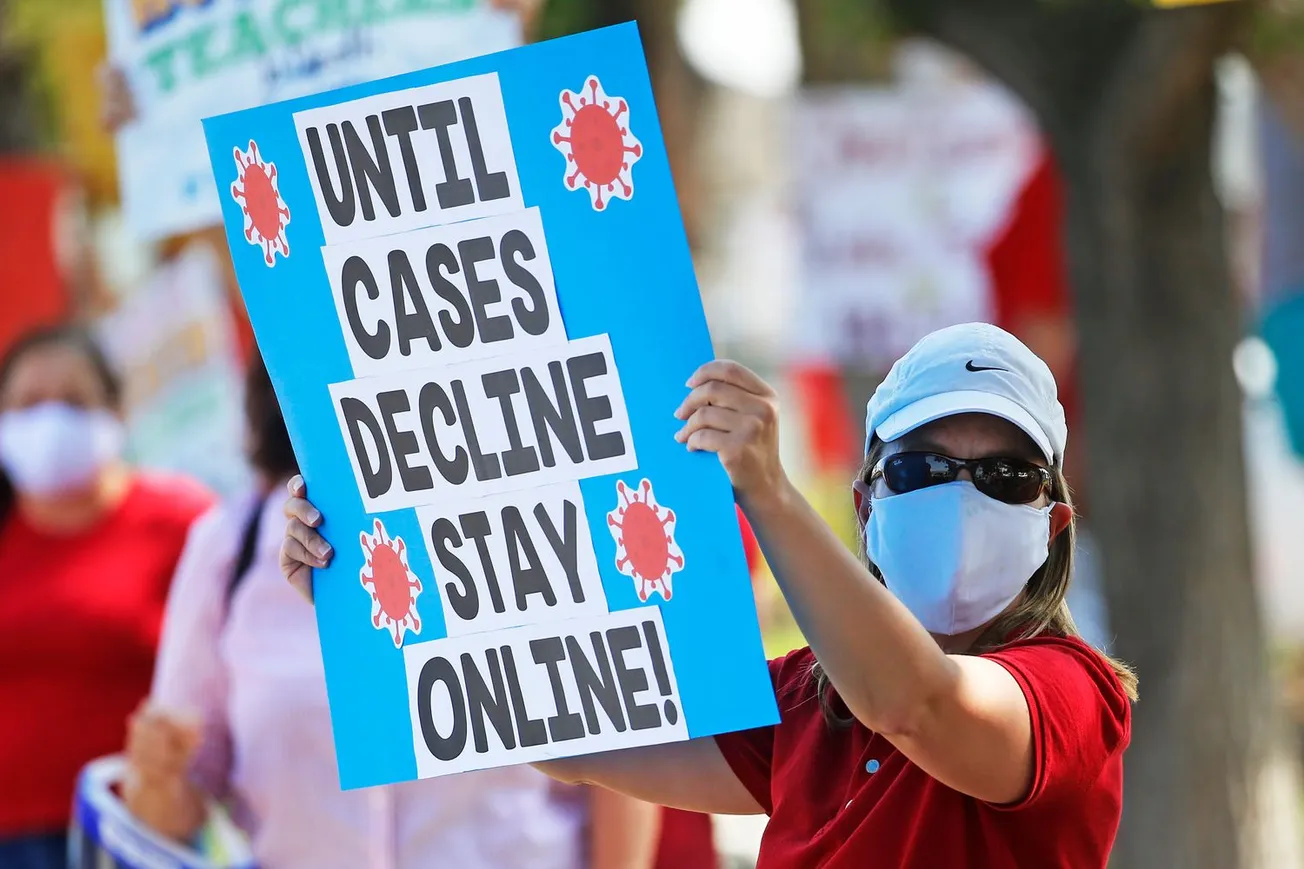Table of Contents
California’s leaders have been busy talking up the effects of the pandemic on minority and underserved communities. But ironically, they refuse to address the most important engine of reducing inequality in the long run: education.
The vast majority of California’s public school students are stuck at home, and the few schools that have reopened are primarily located in high-income areas. For low-income and minority students languishing at home, there is no end in sight to remote learning.
Numerous studies have warned that remote learning has negative impacts on mental health, educational progress, and racial inequality. According to the CDC, rates of youth suicide and suicidal ideation have increased dramatically since March 2020. Despite these warning signs, California refuses to act on scientific evidence which suggests that a return to the classroom can be accomplished without jeopardizing the lives of teachers and students.
In North Carolina and Wisconsin, studies found zero cases of students passing the virus to teachers in reopened schools. The North Carolina state health department estimated that among all COVID-19 infections observed in schools, 96% were due to community spread, not in-school transmission. Across the world, developing countries such as Cambodia, Ghana, and Afghanistan have safely returned students to the classroom, with a recent study from the University of Washington concluding that schools are not the main driver of virus transmission.
The blame for California’s school reopening debacle rests chiefly with teachers unions, who are attempting to strong-arm the state’s leaders into delaying reopening for as long as possible. In December, the California Teachers Association, the state’s largest teachers union, expressed opposition to opening schools without more safety precautions.
On the surface, this appears to be a reasonable ask. Schools should be equipped with the same social distancing and disinfecting protocols afforded to other public buildings. Common-sense precautions can keep both students and teachers safe. State officials recognized this and responded by promising $2 billion for COVID-proofing California’s elementary schools.
This did not satisfy the teachers unions. Rather than accept funding for additional safety precautions, unions in Sacramento and San Francisco have taken to mandating vaccine access for their members before agreeing to resume in-person learning. San Francisco had to sue the district teachers union in a futile attempt to get students back to the classroom.
Let that sink in: one of America’s most progressive cities sued its own teachers union in an attempt to save the education system - from the teachers! Unfortunately, an agreement with the union requires all staff to be vaccinated before students can return to in-person learning. The result? Students in SF are not expected to return to school for the rest of the school year. (Except those in private schools, of course, who’ve been learning safely in school since the fall)
While teachers play a critical role in society, it is downright blackmail to demand vaccination for all teachers, especially when doses are limited and the elderly and other at-risk populations are being prioritized. The CDC Director Rochelle Walensky has said that vaccinating all teachers is not necessary to safely reopen schools. If teachers fall into high-risk categories, they absolutely should be vaccinated and protected from the virus. States such as Florida have already opened up vaccination to teachers above the age of 50, who are at higher risk from the virus.
However, it is unnecessary and unwise to prioritize all teachers instead of more vulnerable groups. Over 71% of America’s public school teachers are under 50 years old, with 14% under the age of 30, groups with low virus risk.
Taking on the unions will require a coordinated government effort. State executives must courageously stand up to the unions publicly, as Governor Ron DeSantis has done in Florida. Democratic policy makers would do well to follow the example of Rhode Island Governor Gina Raimondo, who has marshalled the bully pulpit incredibly well to criticize superintendents for reverting to virtual learning. State legislatures should predicate future public school funding on meeting reopening milestones and pass laws that punish teachers for striking. In Iowa, striking teachers face $500 fines and six month jail sentences.
But unions are not the only problem. Government officials and boards of education have chosen inaction and diversionary tactics over any attempt to craft a reopening policy. Take the San Francisco Board of Education (SF BOE). At a recent meeting, board members chose to spend their time and several million dollars of the city’s money renaming high schools rather than discussing a plan for safe reopening. With priorities like these, it’s no surprise that the teachers unions have the upper hand in California. Political will is a currency in short supply these days, and the SF BOE is dead broke.
The plight of students during the pandemic isn’t limited to the Golden State. California’s progressive rot is quickly infecting the rest of the country at the highest levels of government. Just weeks ago, the Biden administration backtracked on its promise to fully reopen in-person learning within the first 100 days, instead scaling back the initial proposal to target reopenings for just one day of in-person learning per week. White House Press Secretary Jen Psaki then backtracked again in the midst of uproar from parents and tried to return to the initial five days a week reopening promise. In short, the Biden Administration has no clue when it will be able to achieve school reopening. The national emergency affecting America’s students will continue unabated.
To be clear, the public school system is not the enemy - America’s public schools are a national treasure and must be protected for generations to come. However, our inability to reopen in-person learning will permanently damage public schooling’s reputation and force parents to seek alternatives in the private school market. The pandemic is threatening public education like never before. Students deserve better, and no option should be off the table for getting America back into the classroom.









